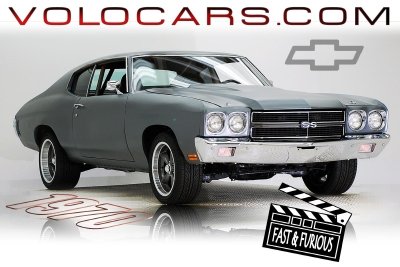
There are many types and models of police cars in use since the 1990s. This article is about the Ford Crown Victoria Police Interceptor and Dodge Diplomat. It also includes information about the Plymouth Gran Fury and Camaro. Each one was unique and has its own characteristics that make it an excellent police car. There is one car that stands out from all the rest: The Camaro.
Ford Crown Victoria Police Interceptor
Ford Crown Victoria Police Interceptor is a midsize police vehicle that was built on a body/frame platform. It was a popular choice of taxi companies, law-enforcement organizations, as well as fleet buyers. Its body on-frame construction made repairs simple and quick. However, there are some drawbacks to the vehicle. This article will discuss some of them. This vehicle might not be right for you.
The back seat of the police vehicle is covered with a steel plate which prevents stabs from suspects. To increase safety, the police vehicle's bench seat has a crack. It features a column-mounted shifting mechanism for easy operation. The vehicle comes standard with an all wheel drive powertrain. The vehicle boasts larger brake drums and an advanced ABS with cooling system.

Dodge Diplomat
The 1988-1990 Dodge Diplomat police vehicle was a powerful, reliable car that was ideal for fleet use. The vehicle was equipped with a 318ci V8 motor that produced 140 horsepower and had roller valve lifters. Although the Lean Burn ignition system was still in use in 1988, it had worked out its kinks. Many movies and TV shows featured the car in 1980s.
The Dodge Diplomat is the only intermediate Dodge model. It was the second most-sold vehicle in 1977. The Diplomat had a padded knee-blocker in front of its driver. The Diplomat was topped with a top made of black vinyl. The Diplomat was also popular with police fleets due to its affordability and reliability. But it was not long-lasting and the Dodge Dynasty replaced the vehicle in 1990.
Plymouth Gran Fury
The 1989 Plymouth Gran Fury Police Car, one of the few remaining full-size R/body police cars by Mopar. It is powered by a 318 ci V8 and has an automatic TorqueFlite transmission. It is only 67,000 miles old and has had a police package modified. The original purpose of the burgundy paint scheme is to be displayed in a New Jersey museum. Gran Fury 90 is a police car that was produced in a limited number of units.
The Gran Fury is the first of its kind to feature a hardtop and a pillared design. The vehicle debuted in 1970 as a pillared coupe, but was later restyled with a two-door hardtop body in 1971. The Fury Gran Sedan, a hardtop sedan, was added to the lineup in 1971. The company was successful with this model, even though police only used a handful of Furys in the 1970s.

Camaro
Boones Mill's Police Department ordered a 1990 Chevrolet Camaro from the factory on the first production day. The car had a 5.7-liter V8 engine and an automatic transmission. The drivetrain has 73,000 miles. The B4C Package adds 16 inch aluminum wheels, an oil cooler, and disc brakes to all four corners. The seller plans to sell the car for $20,000 which would make it an attractive investment.
While the GM Camaro was a very successful car, it was no longer a good police car. The Chevrolet B4C was found to be far more superior by the police force. The Chevrolet B4C was powered by a Corvette-inspired 5.7-liter V8. It could reach speeds up to 150 mph. This car was a favourite among state troopers. It also had more horsepower than its predecessor, and was also faster.
FAQ
To work as an automotive mechanic, do I need a degree? Can I do part-time studies?
Although it's not mandatory, a degree can help. Employers prefer applicants who have completed a full-time degree. It shows you are dedicated and have worked hard to achieve your goals.
It doesn't mean that you can't work while you study. Some universities let students complete their coursework in the summer and then continue their studies during the school year. Students can also take classes part time throughout the academic year.
What is the best career for an automotive mechanic?
For those who are passionate about excellence, automotive is a rewarding industry. It is important to work hard and learn as much from others as you can in order to succeed in this industry.
Communication skills are important as customers and coworkers will often be your main focus. It is important that you are willing to travel, work long hours and be able to commute.
If you're interested in pursuing a career in automotive, consider taking classes at community colleges and universities. Many schools offer programs specifically designed for students interested in auto repair, sales, or customer service.
Studying mechanical engineering is an option if you're interested in pursuing a degree. You can get your bachelor's degree in as little as four years.
Many companies will also hire graduates right out of school. It's a smart idea to begin looking for work while you have the opportunity to study part-time.
Once you've completed your education, you'll probably need to complete some form of training before being able to take up a position as an automotive technician.
This means you'll need pass exams like the Automotive Services Excellence (ASE), certification exam. This test covers topics like engine maintenance, brakes system, suspension, and many other subjects.
Once you pass the ASE test, your license can be applied for by the National Institute for Automotive Service Excellence.
Private individuals can have their vehicles repaired with a license. You'll be paid based upon the number of services provided.
Not all states require licensing. A license is required if you plan on working outside of your home state.
Some states don't issue licenses until after completing a certain amount of training. If this is you, you may need another option.
Is it possible to work as an automotive mechanic?
It can be done. Many garages post their vacancies online. Many people apply simply because they think it might make them feel good. Try applying to a few jobs and seeing if the garages accept student applications. Another option is to ask family members and friends if anyone works in this industry. They may be happy and willing to recommend someone.
How do I fix my car for a hobby?
It's a great hobby to take on if you are passionate about cars. You can repair them, buy their parts, sell them, or just have fun with them. It's a fun hobby that you can do if it interests you.
But it is not easy to turn this into your full-time occupation. This requires dedication and hard work. It requires a lot investment.
So unless you have a good reason for wanting to get involved with cars, then it might be best to leave it alone.
Statistics
- There were 749,900 jobs available for automotive service technicians and mechanics in 2016, which is expected to grow by six percent through 2026. (jobhero.com)
- 52% of Mechanics in the United States think their salaries are enough for the cost of living in their area. (indeed.com)
- The U.S. Bureau of Labor Statistics (BLS) reports that the job outlook for automotive service technicians and mechanics is expected to decline by 4% from 2019 to 2029. (indeed.com)
External Links
How To
How to become an automotive technician
An automotive technician is responsible for vehicle maintenance and repair. He/she can be found at auto shops, garages and service centers. He/she assists customers in fixing their cars, trucks or motorcycles. An automotive technician must be capable of diagnosing problems and making repairs safely, accurately and efficiently.
To become an automotive technician, a person must first earn an associate's degree from a vocational college. After completing this program the student must pass the National Institute for Automotive Service Excellence exam (ASE). ASE stands in for American Society of Mechanical Engineers. The ASE certification test consists two sections. The first section tests your mechanical skills, while the second tests your practical knowledge. You will need to attend an authorized testing site in order to pass the test. These locations can be found online or at your local auto dealer.
After passing the exam, a candidate must take a state exam before being licensed as an automobile technician. This process can vary depending on where the applicant lives. Some states require candidates to complete a training program, while others let them study on their own. In addition, some states license technicians immediately after they receive their license, while others wait until they have completed at least six months of employment as an automotive technician.
A person must apply to an auto dealership in order to get started as an automobile technician. Most employees who are hired start as apprentices. Apprenticeship programs usually last three years. The apprenticeship program teaches students how to change oil, adjust brakes, replace tires, clean spark plugs, inspect engine compartments, and perform routine maintenance. Advanced repairs can be done by some students, including replacing shocks, installing air filters and repairing engines. Classes are offered by most schools during regular business hours. Some schools offer evening classes, however.
Once a student finishes his/her apprenticeship, it is possible to become a Journeyman. Journeymen usually spend four to five year learning how to install major systems like transmissions, differentials steering gear, suspensions, drive shafts, and steering gear. They learn how to do complex repairs such as remanufacturing engines, rebuilding transmissives, and troubleshooting electronic components. Because they have the experience and knowledge to do the job right, employers love hiring journeymen.
Candidates who pass the required exams are eligible for a license. According to the Bureau of Labor Statistics in 2010, nearly 1.7 Million automotive mechanic jobs were available. The Bureau of Labor Statistics predicted that this number would rise by 18% from 2009 to 2020. A candidate who plans to open a shop should expect to spend many thousands of dollars on equipment and supplies.
The salary of an automotive technician will depend on many factors including where you live, your education level, experience and the type of employer. A jobless person can expect to make $20,000 per year. A person with only a high-school diploma could make around $21,000 annually. Earnings for those with an associate's diploma are approximately $24,000/year. Technicians with bachelor's degrees earned about $27,000 per year. Masters' degree holders earn around $32,000 per annum. Salary increases can be common. A professional who earns less that $30,000 today could reasonably expect a $40,000 increase in the next few decades.